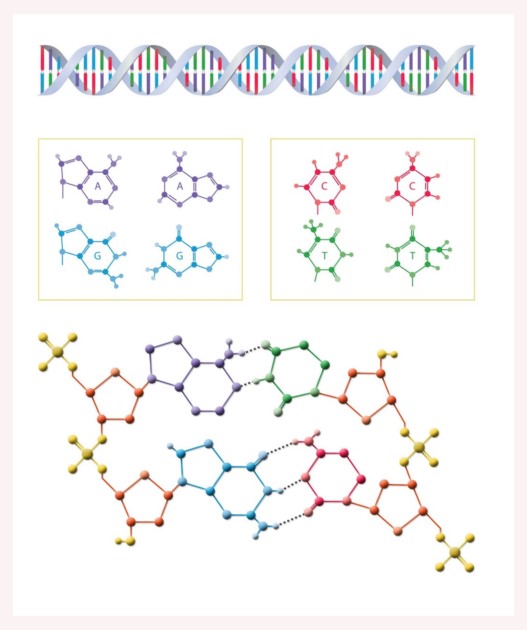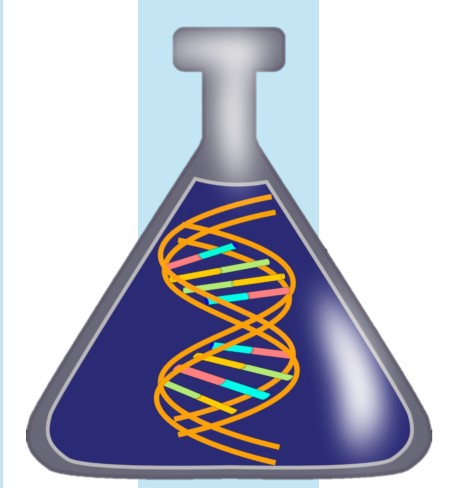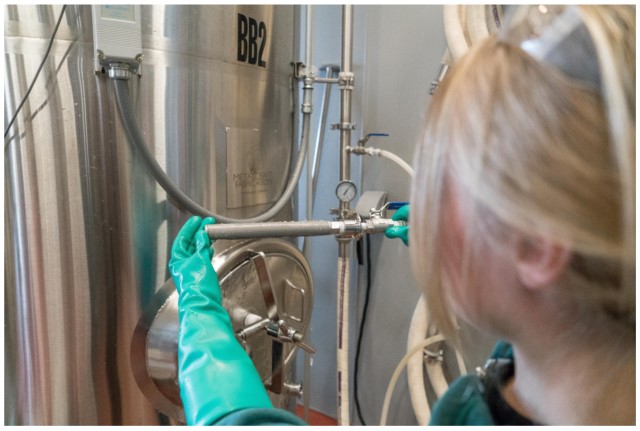Therapeutic Peptides and Proteins At A Glance
Pharmaceutical industry regularly finds its new ways to develop a new unique class of medicinal products. Protein and Peptide-based therapeutics is such kind of newly emerging class of pharmaceuticals. In recent decades, many Protein and Peptide molecules were successfully approved by regulatory agencies. These are serving their purpose in the treatment of chronic diseases such as cancer, diabetes, and cardiovascular disease. Sophisticated manufacturing techniques of proteins and peptides and advancement in Recombinant DNA technology raising the market to next level. The size of the business is also growing at an appreciable rate.

What are Peptides and Proteins?
The human body forms with trillions of cells. Cells execute different kinds of functions in the body. Proteins and Peptides are an important part of cells and participate in many biological functions. An amino acid is a key organic compound that helps cells in making Proteins and Peptides and a source of energy for bodily functions. More than 250 amino acids are available in nature.
Introduction of Peptides
The amino acid is the building block of peptides. When a functional group "amine" in one amino acid joins with a functional group "carboxylic acid" in another amino acid, a peptide bond (or amide bond) forms. Several amino acids join together by a peptide bond to form a peptide, i.e., polymerization of amino acid through peptide bonds.

In general, a polymer named as a peptide when it contains amino acids between 2 and 50. US FDA accepts any polymer as a peptide when it has amino acids less than or equal to 40.
Two types of peptides are there.
1. Oligopeptides: a polymer contains a relatively small number of amino acids. For example 2 to 15.
2. Polypeptides: a polymer contains more amino acids than Oligopeptides. For example 20 to 50. It's a continuous unbranched peptide.
The bradykinin is a naturally occurring peptide in the human body. It controls the blood pressure.

Introduction of Proteins
Multiple polypeptides join together to form a protein, i.e., a chain of two or more polypeptides makes a protein. A protein contains more than 50 amino acids. Protein is an organic compound and made with 20 different amino acids. The amino acid sequence is unique for each and every protein.
The sequence of amino acids dictates the structure, shape, and size of proteins. Proteins form in two shapes. 1. Globular (spherical) 2. Fibrous.
Proteins with globular shapes are water soluble whereas fibrous shape proteins are water insoluble. Proteins can exhibit four types of structures. They are primary, secondary, tertiary and quaternary.
Proteins are available in many forms such as enzymes and hormones. Some very well known examples are amylase, lipase, pepsin, haemoglobin, insulin, antibodies and myosin.
The therapeutic value of Peptides and Proteins
Nature provides abundant peptides and proteins for the sustenance of living beings. But we cannot use them directly as therapeutics because of their instability and often they are mixtures of different components. Pharmaceutical industry at present concentrating on two areas; metabolic diseases and oncology. Diabetes and obesity are widespread diseases across the globe. Research is going on targeting these two sections.

What is disease?
The human body is an instrument which works using various chemicals as a fuel in a systematic way. The amazing mechanism of various parts in the human body provides a natural protection to it from the bad environment. In fact, a living body itself is a chemical factory. Human body regulates some of the biological functions using a wide variety of peptides and proteins.
For any reason, any shortage of these chemicals occurs, some of the biological functions may refrain from doing their routine activities. Then the body becomes sick and it expresses it in various ways, such as fever, pain and swelling. This phenomenon is defined as a disease. It is a purely chemical imbalance and functional disorder. Introduction of medicine into the human body rebalances these chemicals and works as a remedy.
Therapeutic Peptides and Proteins are also one class of medicines. These are highly selective when compared with chemically synthesized drugs substances. High selectivity leads to the low toxicity; that means low probability of side effects.

The therapeutic value of Peptides
New innovations in information technology providing better solutions for the challenges faced in designing therapeutic peptides. 75% of the therapeutic peptides are administered as injectables. Oral types are very few due to their instability and nature of degradation in the stomach. Hence, at present, these are administered through parenteral route.
The biggest advantage of therapeutic peptides is they do not stagnate in organs such as liver and kidneys. Hence, the threat of side effects due to drug intake is very less. These are low toxic products.
The need for multifunctional peptides is increasing and it is one of the future demanding markets also. The companies which are in the race vigorously trying to discover viable production routes.
The multifunctionality is an inherent property of peptides and proteins that are available in nature. They have the ability to bind DNA and at the same time, they can penetrate into the cells. The best example is lactoferrin which exists in breast milk (about 2-3 mg/mL) and is a protein. This has 17 different biological properties. Some of them are antifungal, antimalarial and antiviral.
The benefit of a multifunctional peptide is that they can provide additional biological functions along with the primary function. It means they exhibit more than one pharmacological activity. This specific property enhances the scope of clinical use and enables doctors to target multiple symptoms simultaneously.
In an aggregate, aiming multiple symptoms of a disease with a single dose of multifunctional peptide gives more benefit and comfortability to the patients.
Some illustrations of the therapeutic peptides which already available in the market for clinical use :
1. Victoza (Company: Novo Nordisk)
2. Copaxone (Company: Teva)
3. Lupron (Company: Abbot)
4. Zoladex (Company: Astra Zeneca)

The therapeutic value of Proteins
Proteins play multiple roles in the human body. They discharge their duties mainly in the cell. For example, proteins act as a macromolecule carrier, receptors, and catalysts.
The human body uses proteins to build body parts and repair tissues. Proteins disintegrate (breaks down) in the human body through a biochemical process to construct the body.
Under normal conditions, the magnitude of the disintegration of protein occurs as much as the body needs for its maintenance. In an abnormal condition, the body breaks down the proteins in excess, i.e., more than the needs of the body. The injured people and people who undergone surgeries require protein to recover.
Scientists successfully engineered many proteins in the laboratory for clinical purposes. Gene manipulation and protein engineering together can create better therapeutic proteins.
The first laboratory made protein was Insulin, in the 1920s. The first therapeutic protein that obtained regulatory approval was Insulin, in 1982.
Some of the therapeutic peptides available in the market for clinical use :
1. Cortrosyn (Company: Amphastar Pharmaceuticals)
2. Ovitrelle (Company: Merck Serono Europe Limited)
3. BioTropin (Company: Biotech General)
4. NutropinAQ (Company: Genentech Inc.)
A database of FDA approved therapeutic peptides and proteins
From http://crdd.osdd.net/raghava/thpdb/index.html
Manufacture of Therapeutic Peptides and Proteins

The manufacturing process of peptides and proteins is a very complex one due to the large size of molecules. In chemical synthesis, you have the freedom to change the process as per your needs in a number of ways. This is possible because of readily available information on the structures and properties of chemicals that you are using in the synthesis. You can predict the consequences of each experiment which you are conducting to obtain better quality and yield. But it is not the same case with peptides and proteins.
The derivation of peptides and proteins from cells and tissues by biological methods is a quite complex thing. Recombinant DNA technology is the prominent technique used to manufacture these heavy molecules.
The demand for multifunctional peptides is increasing day by day. Hybridization or fusing of the peptides may bring ease in the process and help the manufacture of the multifunctional peptides at commercial scale.
As of now, three manufacturing technologies are available for therapeutic peptides and proteins.
1. Solid Phase or Chemical synthesis
2. Recombinant DNA
3. Fermentation of Proteins (for the making of peptides)
Majority of Therapeutic Proteins, that are available in the market, are manufactured using Recombinant DNA technique. The rapid development in computer technology, taking genetic engineering into a new dimension.
The scope of protein engineering and Recombinant DNA technology has been widened with the advent of several new computational programmes.
The latest technical developments in bioinformatics, providing better analytical tools and solutions to make improvements in therapeutic protein design.
Challenges Facing By Therapeutic Peptides and Proteins

The main issue worrying the manufacturers is the stability of these complex molecules. These compounds degrade very quickly, which ultimately leads to the low specificity or low bioavailability and defeats the purpose. Metabolic liability also one of the major challenges. These are easily broken down and transformed by a biochemical process which naturally occurs in the human body.
For example, therapeutic peptides and proteins have limitation for oral dosing. It degrades as soon as it reaches the stomach. The reason is a certain biochemical process in the gastrointestinal tract (GI tract or digestive tract) which breaks down and transforms them into other components. The GI tract is an organ in the human digestive system. Proteins tend to degrade in the gastrointestinal tract by enzymes.
The better carrier systems of therapeutic peptides and proteins not yet fully developed to increase their oral bioavailability. Unwanted enzymatic degradation is the major concern for the storage of oral formulations. This instability further makes the drug transporting system critical and expensive.
Regulatory Perspective of Therapeutic Peptides and Proteins

Manufacture of therapeutic peptides and proteins has unique challenges. Regulatory bodies are majorly concerned with the impurities that generate during the production process. The difficulties in identifying these impurities and technical complexities are the barriers to the progression of this field.
It is very difficult to detect and analyze peptide related impurities. The main reason is they usually have similar sequences to the main compound itself. Hence, regulatory agencies are so cautious in approving the therapeutic peptides and proteins.
Therapeutic peptides come under New Chemical Entities (NCEs). Therapeutic proteins come under New Biological Entities (NBEs). Approval of new generic products requires extensive data and study since the involvement of high criticality in proving the equivalence of them with brand name products. It needs advanced analytical methods and statistical tools to determine the equivalence.
The regulatory agencies evaluate both preclinical and clinical study data thoroughly. Regulatory agencies may sanction the approval when the safety, purity, and potency of the product are well established and demonstrated.
Characterization of complex generic peptides and proteins is a crucial part in the process of getting regulatory agency's approval. Demonstration of the product that it is structurally identical to the brand name product is a difficult task. The larger the molecule, the more the criticality.
Many biosimilars got approval in the USA under Section 505(b)(2) of the Food, Drug, and Cosmetic Act. The other important thing to note is FDA sanctioned approval for very large and complex molecules under Section 351 of the PHS Act (42 USC § 262).
Market size of Therapeutic Peptides and Proteins

Gradually clinical applications of therapeutic peptides and proteins have been increasing throughout the world. Cancer, diabetes, and obesity are the areas which are prioritized by the pharmaceutical companies since these diseases are widespread across the globe. Slowly peptide market is gaining the momentum when compared with proteins. Low complexity and production cost are the advantages for peptide manufacturers.
Around 100 approved therapeutic peptides are available in the markets of Japan, EU, and the USA. The global market size of therapeutic peptides in 2017 was $22 billion and estimated to exceed $50 billion by 2024. An estimation of annual global sales for 2018 is at around $25 billion as per the current demand and capacity to supply. Market analysts are predicting that the global market size of therapeutic proteins will reach $218 billion by 2023.
Pharma companies already tasted the lucrative revenues in the biologics segment. Amgen, Genentech, Bristol-Myers Squibb, Teva, Novo Nordisk, Pfizer, Eli Lilly, Roche, Astra Zeneca, UCB Group, Schering-Plough Corporation, Ambio Pharm, CPC Scientific Peptide Company, Chemi Peptides, and Sanofi are some of the companies which seriously involved in the manufacture of therapeutic peptides and proteins. They are allocating a significant amount of funds for the research and development in this category.
Summary
Therapeutic peptides and proteins are a growing class of drugs intended for clinical purposes. These have a high Therapeutic Index because of their high bio specificity. The chains of amino acids form both Peptides and proteins.
The amount of amino acids determines the size of Peptides and proteins. A polymer is a peptide if it contains 2 to 50 amino acids and a protein if it contains more than 50.
One of the predominant techniques used for the manufacture of these large molecules is Recombinant DNA technology.
The clinical use of therapeutic peptides and proteins majorly appears in the area of oncology and metabolic diseases. These molecules produce low toxic effects.
Low bioavailability and instability are the major challenges faced in the development of therapeutic peptides and proteins. In comparison with proteins, peptides are more capable to penetrate into the tissues due to their smaller size.
A promising future is clearly visible to the industry players in this segment of therapy. Analysts foresee a tremendous growth in the biologic sector.
The expectation is peptide drug market may reach $50 billion by 2024 and protein drug market $217 billion by 2023.
SHARE this article with your friends, if you feel this is helpful. It may help them if they are in need. Each one help one.
Suggested Readings
Click on the topic to read article.
Author Profile

Ram Kumar Reddy
Ram Kumar Reddy is the founder of Pharma Times Now. Helping students of Pharmacy and Chemistry and employees in the pharma industry in learning pharmaceutical science. Ram Kumar Reddy has 24 years rich experience in the Pharmaceutical industry and well versed in quality systems. He worked with Dr.Reddys and Sai Life Sciences. He lives in Hyderabad, India.













No comments